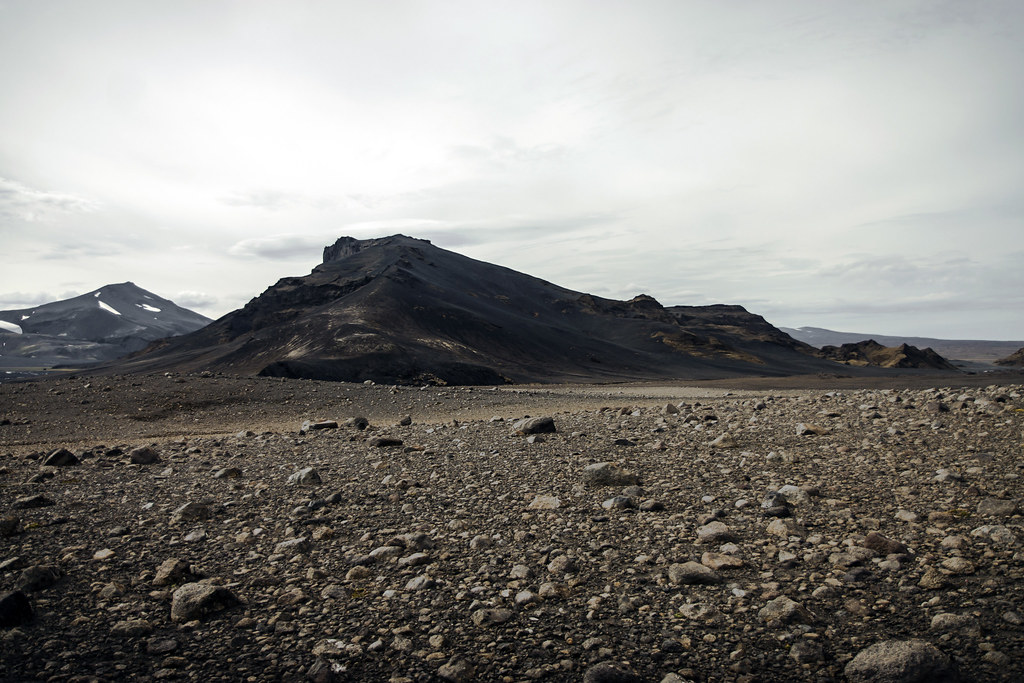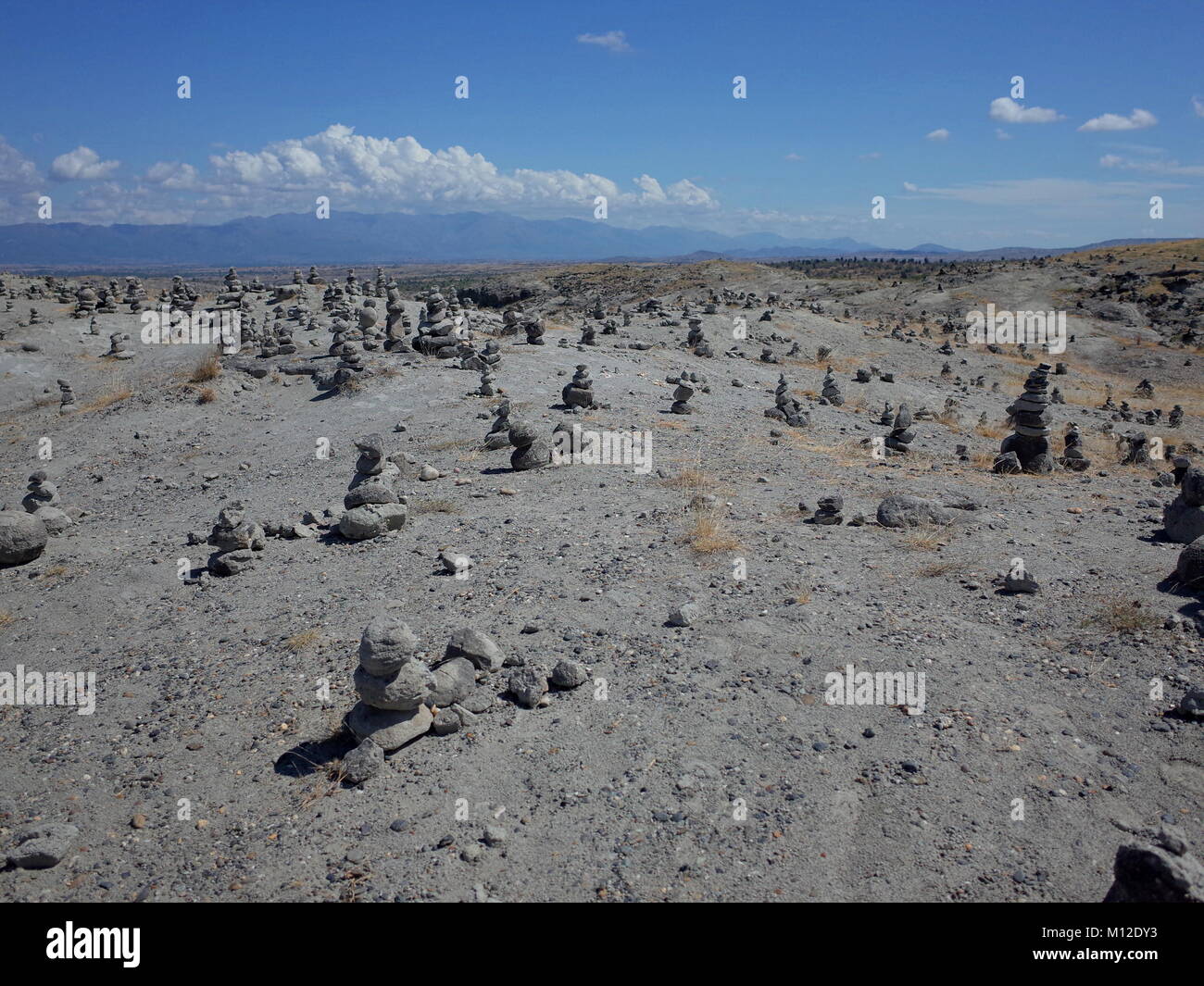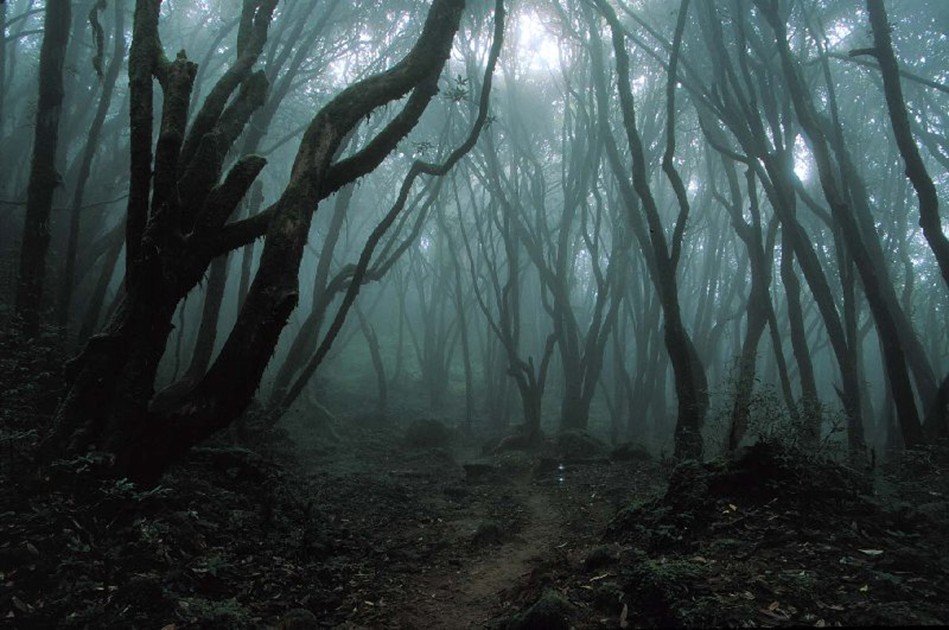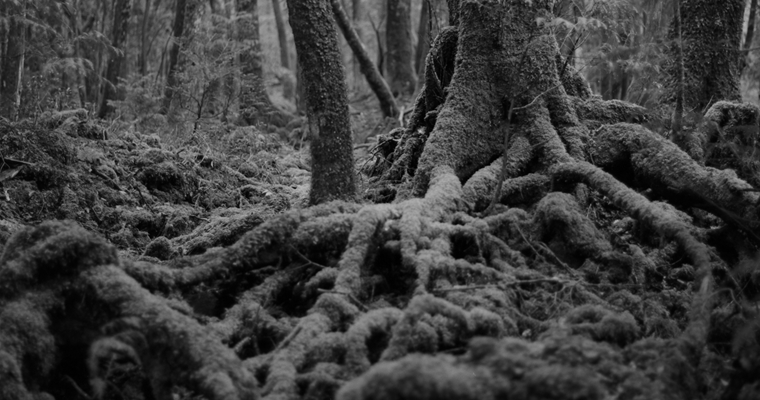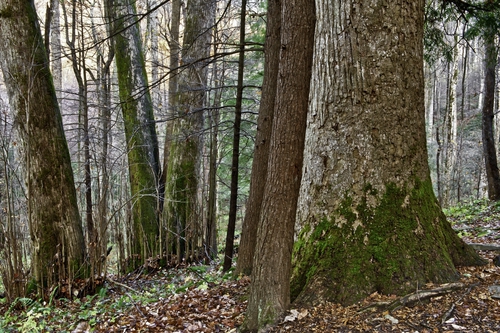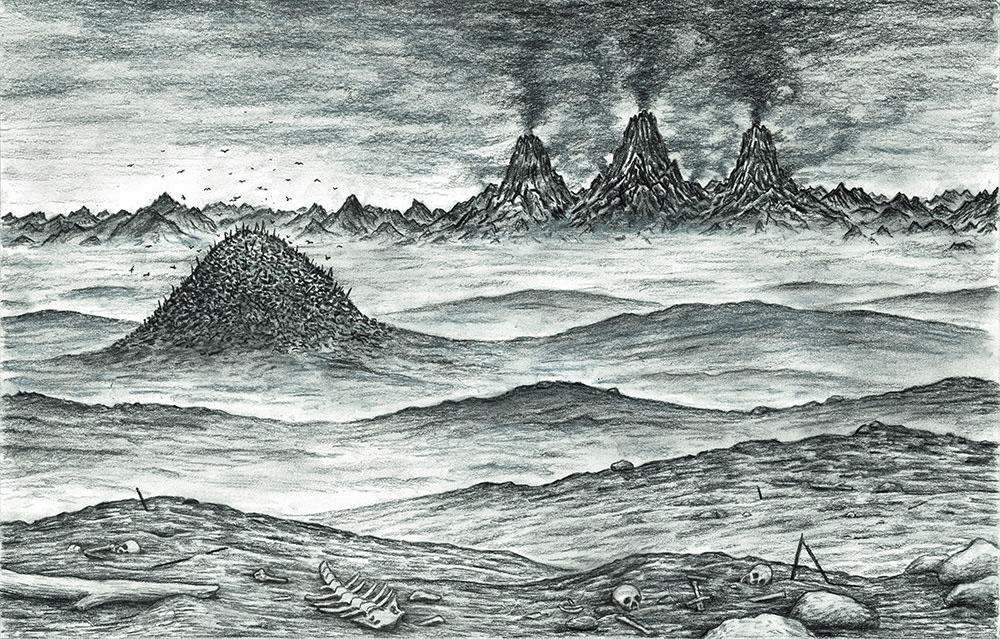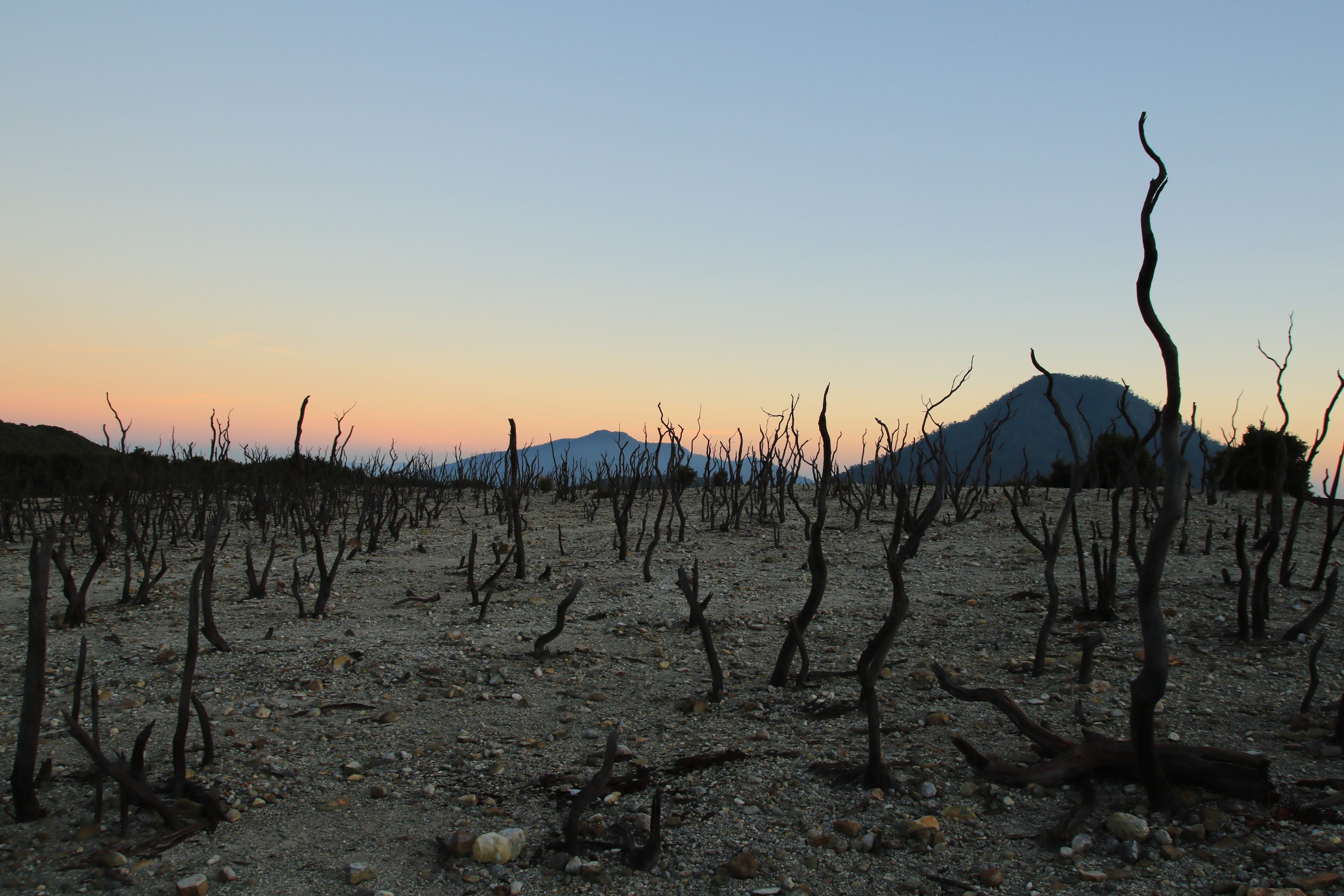We won't be able to show stench on screen, so I agree that we have to have images of death and disease creeping in.
Trees being 'spread out' and far apart is typical of old growth forests. The canopy blocks out the light, so there are few opportunities for underbrush to grow. The ground is clear and open.
Once you cut down an old growth forest, what grows back is a 'young' forest, with dense undergrowth, lots of stickers/thornbushes, and small trees all right on top of each other. Most forests on the East Coast of the US are new, young forests. There are very few old growth forests left. But you can see one in the Great Smokey Mountains National Park.
Here you can see a very new 'forest' with a dog for scale. The trees very much grow on top of one another. This is a narrow strip of trees between two cornfields that has been allowed to grow up because the land is swampy. The land in the foreground is mowed, which explains why there are no trees there.

Here are some trees in Shenandoah National Park. As you can see, sunlight reaches the trail through the forest floor. Most of the trees are young/skinny.

An old growth forest feels 'clean' and 'open'. The forest floor is not covered in brush, and the rather large trees are well-spaced from each other. This example is from Great Smoky Mountain National Park.
So, practically speaking, a blight or forest fire that kills off most of the trees would result in a young forest, with trees vying against each other and brush and thorns underfoot to make traversing it difficult.

